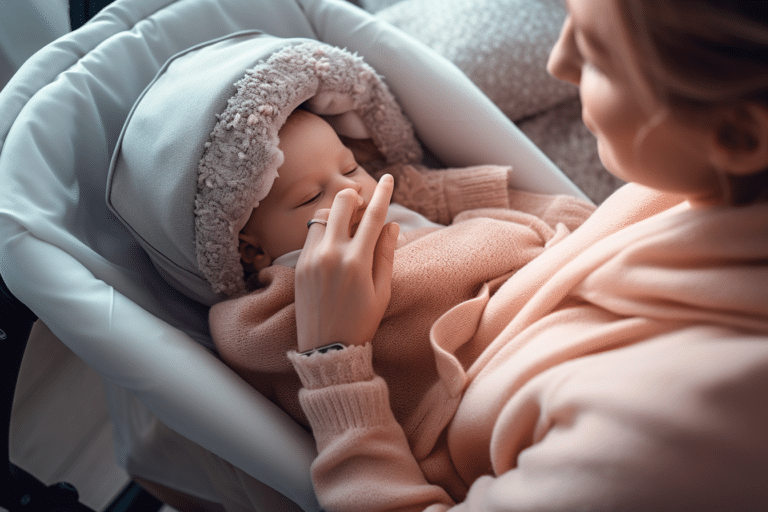Miraculous Labor: A Journey of Strength and Joy
Labor is a miraculous and complex process that brings new life into the world. A journey for both mom and baby! Women go through different phases, each with unique characteristics and challenges.
The first stage is called early labor. It can last hours or days. The cervix starts to dilate and thin. Contractions may become regular and intense. It’s important to stay rested and hydrated during this time.
Active labor is next. Contractions are stronger and more frequent. The cervix continues to dilate, allowing the baby to move through the birth canal. This is tough – mentally and physically.
Finally, transition. Contractions reach peak frequency and strength. The cervix fully dilates, preparing for the baby’s arrival. Women may feel excited, exhausted, or a mix of emotions.
Pro Tip: Have a support system in place for labor. A partner, friend, or doula can provide encouragement and assistance. It can make all the difference during each stage.
Stage 1: Early labor
Early labor is the start of childbirth. Contractions begin and the cervix starts to open. It’s important for mums-to-be to stay composed and ready. Here’s a 3-step guide:
- Notice the signals: Observe regular contractions that become stronger. Look out for backache, cramps, or bloody show.
- Check the contractions: Use a stopwatch or app to note the length and frequency. Usually, if they are 5 minutes apart and last 60 seconds, it’s early labor.
- Deal with any pain: Rest as much as possible. Try breathing exercises or positions that help, like walking, sitting on an exercise ball, or warm showers.
Each woman’s experience of early labor is different. It can be fast or take several hours or days.
Make sure you have your hospital bag ready with clothes, items, and docs.
Fun Fact: According to ACOG, early labor can last up to 20 hours for first-time mums.
2.1 Signs and symptoms of early labor

Early labor marks the start of childbirth. A few telltale signs show that labor is coming. They are:
- Increased vaginal discharge, often clear and tinged with blood.
- Mild, irregular contractions, like menstrual cramps.
- Periodic backache due to baby’s position or muscle stretching.
- Cervix opening and thinning, measured by a pelvic exam.
These are the signs of early labor. Women can use them to prepare for childbirth. Throughout history, women have passed this knowledge down from one generation to the next. Now, modern medical technology helps healthcare providers use these signs to guide women through labor.
2.2 What to do during early labor
Early labor? Stay calm! Here’s a guide:
- Monitor contractions. Time them with a stopwatch.
- Stay hydrated & nourished.
- Practice relaxation techniques.
- Create a cozy environment.
- Move around & stay active.
- Reach out for support.
- Remember, every labor is unique.
- Trust your instincts & listen to your body.
Women who’ve experienced early labor stress its importance. By focusing on their needs, they had a great birth experience.
Stage 2: Active labor
Stage 2 of labor, or active labor, is a pivotal stage. Contractions become stronger, longer, and closer together. The cervix continues to open up to reach 10 centimeters. The baby’s head presses against the cervix as it moves down. The mother feels strong urges to push. Each experience is unique, so here are some tips:
- Move around and change positions. Walking or using a birthing ball can help.
- Use deep breathing and guided imagery to manage pain.
- Have a supportive birth team for physical and emotional support.
Stage 2 of labor is an intense journey, but these tips can help women make it through.
3.1 Signs and symptoms of active labor
Signs and symptoms of active labor can give helpful info on childbirth. These indications, also called the transition phase, mean the baby’s coming soon.
- Contractions get stronger, longer and more frequent.
- Time between contractions gets shorter.
- Cervix widens, measured in cm.
- Cervix thins and stretches.
- Pressure in pelvic region increases.
- Strong urge to push.
Duration and intensity can vary from woman to woman. Pro Tip: Stay hydrated with clear fluids or ice chips. This helps energy levels and prevents dehydration.
3.2 Coping mechanisms for active labor
Active labor can be intense, so having coping mechanisms in place can help women manage challenges. Here are six strategies for a more comfortable experience:
- Breathing techniques like counting breaths or patterned breathing.
- Changing positions like standing, kneeling, or sitting on a birthing ball.
- Massage and touch from a partner or doula.
- Warm water immersion through a shower or pool.
- Visualization and positive affirmations for a calm mental state.
- Medication options like nitrous oxide or epidurals.
Discussing these options with a healthcare provider beforehand is important. Each woman has unique needs, so tailored care can help her navigate labor positively. Share this valuable information with others to make a difference during this incredible journey!
Stage 3: Transition

Transition is an important stage in labor. This is when the cervix opens fully to 10 centimeters, meaning the baby is about to arrive.
During this intense phase, 3 key steps occur:
- Contractions become stronger, longer, and more frequent. This is nature’s way of preparing for the final push.
- The baby moves deeper into the birth canal, causing pressure on the mother’s pelvis. This can cause more discomfort or pain.
- Women may experience more anxiety and fatigue. They may also feel a combination of emotions from excitement to fear.
Every woman’s transition experience can be different. Pain management, previous birthing experiences, and individual body responses can influence it.
Sarah found strength in her own way. As her contractions intensified, she used deep breathing techniques. With determination and her partner’s support, she welcomed her baby girl.
Transition is difficult, but it leads to the ultimate reward: meeting your baby.
Conclusion
Throughout labor, the body embarks on an incredible journey to welcome a new life. Contractions start early and become more frequent as the cervix dilates and effaces. This “latent” phase may bring excitement and anxiety. Then active labor begins: contractions get stronger and closer together, allowing the baby to descend through the birth canal. This can be a time of immense pain and exhaustion.
Finally, delivery arrives. The third stage involves the baby’s birth and the placenta’s delivery. Mother and baby work together to complete the journey. Then, a moment of joy and relief as new life is born into the world. Women have been doing this for centuries – a reminder of our innate power to create life.
Frequently Asked Questions
Q: What are the different stages of labor?
A: The different stages of labor are divided into three main phases: early labor, active labor, and the delivery of the placenta.
Q: What happens during early labor?
A: Early labor is the initial phase of labor in which contractions become regular and the cervix starts to dilate. It can last for several hours or even days.
Q: What are the characteristics of active labor?
A: Active labor is the stage in which the cervix continues to dilate rapidly. Contractions become stronger, longer, and closer together. This phase usually lasts for 4-8 hours.
Q: What is the transition phase of labor?
A: The transition phase is the final part of active labor, right before the pushing stage. During this phase, the cervix fully dilates to 10 centimeters, and contractions may become intense and frequent.
Q: What happens during the delivery of the placenta?
A: After the baby is born, the uterus continues to contract, which helps detach and deliver the placenta. This usually occurs within 5-30 minutes after delivery.
Q: How long does the entire labor process usually last?
A: The duration of labor varies for each woman. Typically, it can last anywhere from a few hours to over 24 hours, depending on various factors such as the mother’s health, position of the baby, and previous childbirth experiences.






